The best TV shows on Paramount Plus
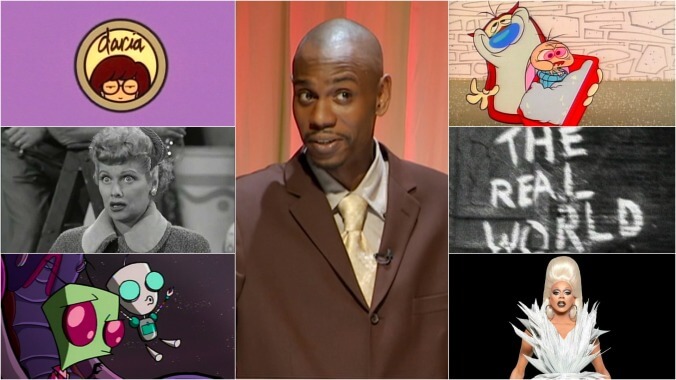
Streaming libraries expand and contract. Algorithms are imperfect. Those damn thumbnail images are always changing. But you know what you can always rely on? The expert opinions and knowledgeable commentary of The A.V. Club. That’s why we’re scouring both the menus of the most popular services and our own archives to bring you these guides to the best viewing options, broken down by streamer, medium, and genre. Want to know why we’re so keen on a particular show? Follow the links in each slide to coverage from The A.V. Club’s past. And be sure to check back often, because we’ll be adding more recommendations as shows come and go.
For anyone who came of age watching the many cable channels now organized under the ViacomCBS umbrella—which include MTV, Comedy Central, VH1, Nickelodeon, and BET—the Paramount+ TV library might look, at first glance, like a streaming El Dorado. But a few clicks through tantalizing titles like Behind The Music (only two episodes available at publication time, Madonna’s from 1998 and Jennifer Lopez’s from 2010) or Double Dare (16 episodes from 1987 is not nearly enough slime!) may yield disappointing returns. Dig a little deeper and you’ll find the televisual gems in this self-described “mountain of entertainment”: the pioneering animated series that aired late at night on Music Television or weekend mornings on Nick; Comedy Central favorites from its late-’90s/early ’00s and mid-2010s heydays; and a handful of over-the-air classics from the Viacom vaults (only some of which have been licensed far and wide across the streaming landscape).
Not a Paramount+ subscriber? Check out our guides to Netflix, Hulu, Amazon, and HBO Max.
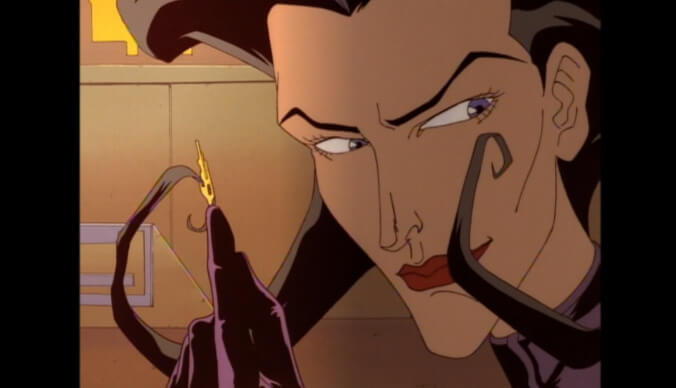
Facing off against inventor/dictator Trevor Goodchild, [Aeon Flux] sabotages schemes and baffles plans, ostensibly in the name of freedom, though she seems more interested in teasing Trevor. Adversaries and intermittent lovers who constantly jockey for dominance, Aeon and Trevor play out their episodic good-guy/bad-guy conflict in a manner common to kids’ cartoon series, but with a heavy sexual frisson and a kinky sense of humor. While both perpetually claiming the moral high ground, they insist they’re trying to liberate or awaken each other to truth, but they’re both as much victims of their fetishistic desires as they are victims of each other’s plots. Those plots take some extremely unlikely forms, from an enclave of artificial life suspended in “an ocean of paralytic fluid” to a cloning scheme to the series of human and inhuman partners they embrace to make each other jealous. [].
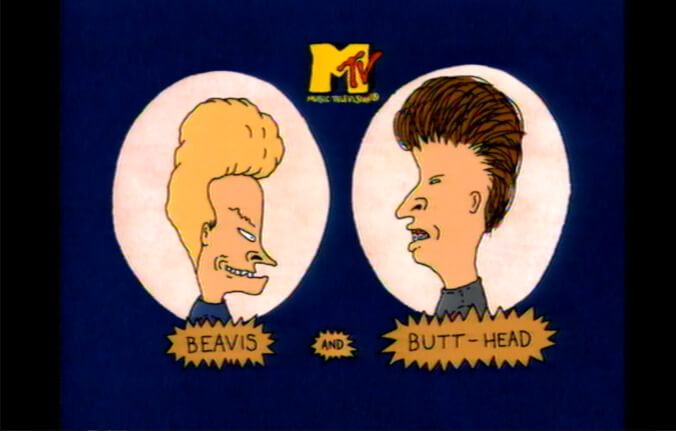
Beavis And Butt-head is the smartest show MTV has ever aired, and it “stars” two of the greatest morons in cartoon history. Butt-head and his even dumber friend Beavis perfectly captured the brains of hormonal, destructive teens—both their general ridiculousness and their biting wit. You weren’t exactly laughing with them, but if you weren’t a total stick in the mud—like the parents who protested the show—you probably recognized some of their opinions as your own, especially about the music videos they watched in every episode, which are sadly lacking on DVD releases. (“These guys are like a cross between Danzig and my butt,” says Butt-head of Type O Negative, rendering all music criticism before or after completely useless.) []
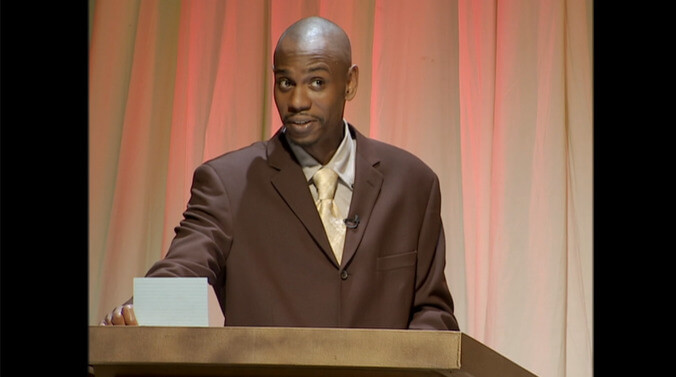
From :Dave Chappelle’s eponymous sketch-comedy series established a tone of defiant irreverence with its first sketch, a notorious fan favorite about a black, blind white supremacist. More than just funny, Chappelle’s Show felt dangerous and relevant like no sketch show since the much-mythologized early days of Saturday Night Live. During its tumultuous two-and-a-half-year run, Chappelle’s Show was prime water-cooler fodder, the show everyone was talking about. Merciless racial satire made Chappelle a comic outlaw and critical darling, and the infectious joy he brought to his work—plus his virtuoso, jazz-like gift for improvisation—made the show a breakout hit and pop-culture phenomenon. Alas, Chappelle’s Show grew progressively darker and more uncompromising until it was too grim even for Chappelle, who famously fled the kingdom he’d created for reasons that are still mysterious. Chappelle’s Show made him a superstar. Walking away at the height of its popularity made him a legend.
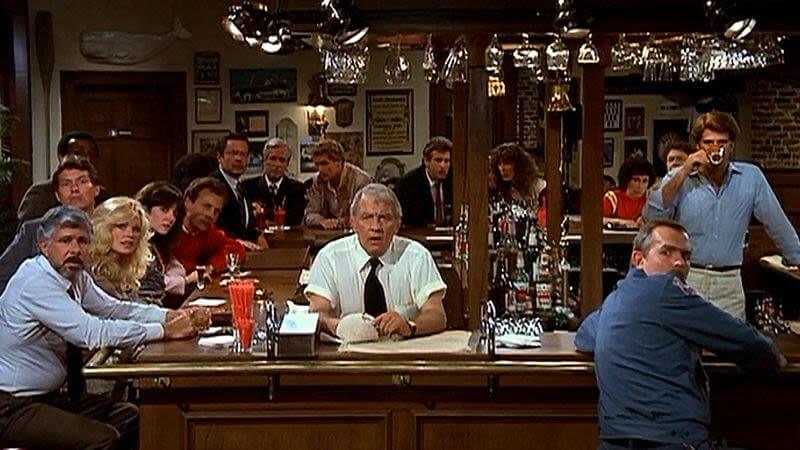
Of all the American sitcoms produced in the 1980s, Cheers feels most like a culmination of what was going on in the ’70s. It’s as if the show took the basic precepts of an MTM show like or , then honed them to the sharpest possible point. Every element was perfectly calibrated for maximum comic value, every cast member precisely chosen, and each character played a specific role within the ensemble. Even the show’s barroom setting seemed calculated. And yet Cheers never felt dry or airless. Creators Glen and Les Charles built a show about a gang of lovable losers, much like they had learned to do while working on . But the central device of the will-they/won’t-they romance would never be done better. Ted Danson and Shelley Long hooked up, then broke up, then hooked up again, and Cheers somehow made it enthralling every time. Some of that may have been due to co-creator James Burrows—unquestionably the most influential multi-camera director in television history—who kept the pace light and effervescent and gave Cheers a sense of elasticity that allowed it to survive even the departure of Long, a move that effectively cleaved the show into two different series. The first is a witty romantic comedy about a dunderhead and the bright barmaid who tries not to love him; the second is a more traditional workplace farce. Both are terrific. []

Smart live-action television shows for girls didn’t actually exist until the mid-’90s, when an ex-Saturday Night Live writer named Mitchell Kriegman managed to convince Nickelodeon to take a chance on an off-the-wall fictional gal from Ohio. Clarissa was strong. She could make her own computer games back when it wasn’t cool for girls to spend time with technology, let alone learning programming. She wore men’s work shirts instead of Esprit, and preferred Violent Femmes to Wilson Phillips. Simply by being an individual, she became an everygirl for viewers. []
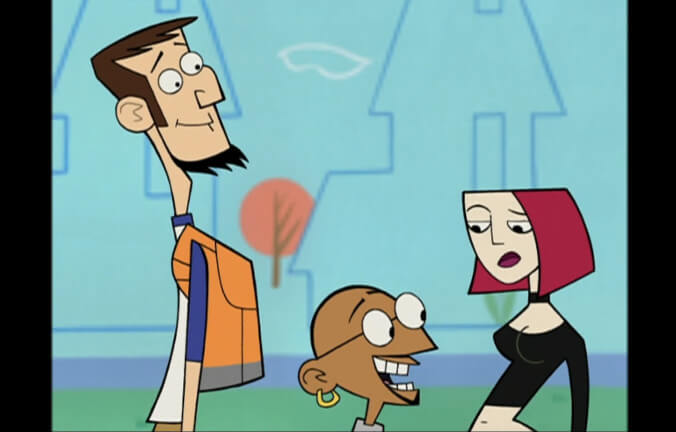
From :Fitting for its subject matter, Clone High was simply out of sync with the times: Too late to take part in MTV’s earlier wave of smartass, pop-culture-savvy cartoons, too early to do the same within the confines of an Adult Swim lineup. The historical humor never reaches beyond the broad strokes of the characters’ biographies: Abe Lincoln, Joan Of Arc, Gandhi, Cleopatra, and John F. Kennedy are largely vessels for TV tropes that co-creator Bill Lawrence couldn’t riff on in his flagship live-action cartoon—the type of stuff his collaborators Phil Lord and Christopher Miller now lace into big-screen fare like the franchise.

Corporate’s stroke of genius is that its Initech, the innocuously named conglomerate Hampton DeVille, isn’t passively destructive. It’s actively malevolent, a profit-hungry monolith where the motto is “We don’t make anything—we make everything” and where HR professional Grace (Aparna Nancherla) once asks Jake (Jake Weisman), “Remember the joy you felt the moment you decided to stop living life to the fullest?” Like the series it visually mimics and , , Corporate is dystopian fiction about our current dystopia-in-the-making. []
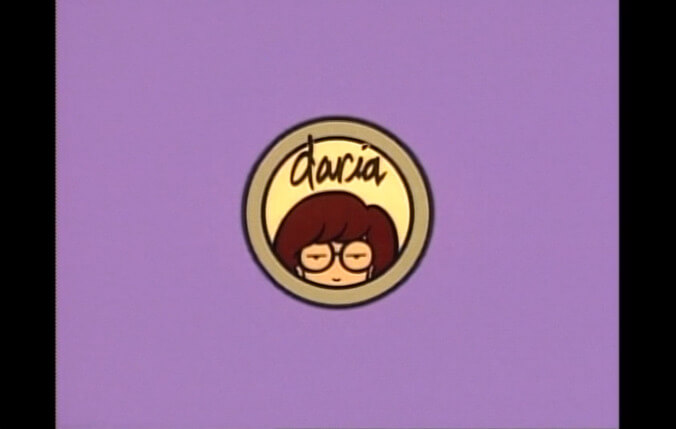
Daria, a show so entrenched in late ’90s alt-culture that one of its characters was named Trent, is due for a renaissance. Deadpan, tabloid TV-obsessed 16-year-old cultural critic Daria Morgendorffer, described by as “a blend of Dorothy Parker, Fran Lebowitz, and Janeane Garofalo,” was a role model to a generation of disaffected teen girls (and boys), and the show’s sardonic take on suburban teen life remains relevant today. Daria is an outcast, for sure, but in her way she’s the most normal person in her Sick Sad World populated with exaggerated caricatures of jocks, nerds, and popular girls. And she’s one of the few TV characters. The character of Daria was initially spun off from our “B” pick, Mike Judge’s Beavis And Butt-head, but Judge had no involvement in the show itself. To distinguish itself from its parent series, series creators Glenn Eichler and Susie Lewis Lynn transferred the Morgendorffers to the neatly manicured suburb of Lawndale in the first episode, a move that provided endless targets for Daria’s sarcastic takedowns. []
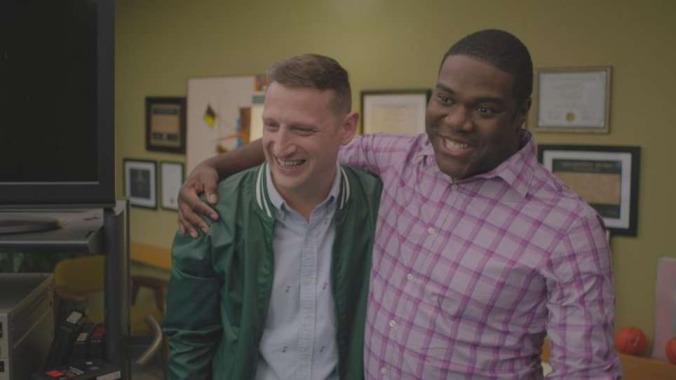
There’s an old improv comedy rule: If you want your scenes to work, stop fighting your partner, and decide to just like them instead. Detroiters stars Sam Richardson and Tim Robinson are both improv vets, and real-life best friends; that might be why their new Comedy Central series leverages their characters’ affection for each other to such excellent effect.The series’ premise offers up plenty of excuses for the pair to pal around: They play low-rent ad men, delivering inept commercials to the hot tub salesmen and sporting goods stores of the title city. The show’s pilot briefly flirts with adding some unnecessary stakes to this simple formula, injecting a plotline about securing an account with Chrysler exec (and executive producer) Jason Sudeikis, and suggesting that Robinson is desperate to live up to his late father’s advertising rep. But Detroiters shows its true colors with refreshing quickness, taking the stereotypical scene where our heroes (who share first names with their performers) attempt to slam out the big idea that’ll save their careers, and quickly shunting it into something much sillier and simple instead. []
In this autobiographical sitcom from Chris Rock, Rock’s fictionalized self is played by Tyler James Williams in a breakout performance. In the roles of Rock’s flawed parents, Terry Crews and Tichina Arnold set new standards for a TV dad and mom. But as put-upon as the eponymous character might be, Everybody Hates Chris is groundbreaking for its portrayal of a Black family whose lives aren’t just defined by their struggles. []
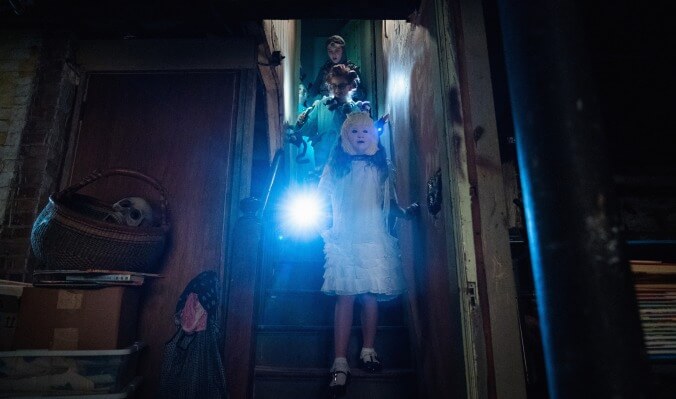
Demonic possession and divine vision seem like an odd fit for Robert and Michelle King—only if you haven’t been following what they’ve been up to since The Good Wife ended. The Kings already dabbled in the unearthly with their one-and-done body-politic-snatching satire BrainDead, and their latest effort for the Tiffany Network, Evil, starts out grounded in the topical, post-Trump, reality-versus-unreality tension that drives their CBS All Access spin-off The Good Fight. Call it The X-orcist Files: Forensic psychologist Dr. Kristen Bouchard (Katja Herbers) is pulled out of the courtroom to help the Catholic Church distinguish between cases of genuine hell-on-earth and garden-variety delusion, alongside priest-in-training David Acosta (Mike Colter) and resident skeptic Ben Shakir (Aasif Mandvi). Despite some familiar trappings, it’s a lack of knowing that sets the tone for Evil’s early going, the protagonists haunted by startling outcomes and a shadowy figure of seemingly bottomless wickedness played by Michael Emerson. Eventually, Evil’s mysteries start to come into focus, but this much is always certain: There hasn’t been anything this stylishly unsettling on network TV since Hannibal. []
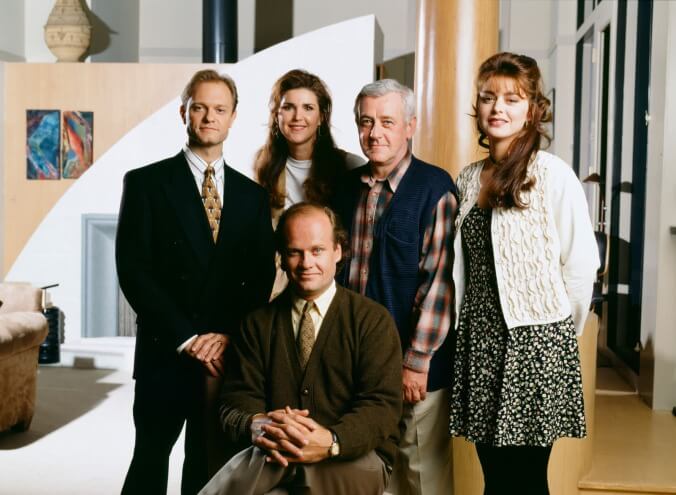
Steeped in the memory of one of TV’s greatest ensembles, Frasier was inherently familiar. When it debuted on September 16, 1993, its charms were immediately recognized, even if the premise was hardly groundbreaking. Workplace humor had bled into family-centered sitcoms in the past, and trumpeting your lead character’s multiple divorces was hardly taboo by the mid-’90s. Frasier’s theatrical staging, which turned most episodes into 22-minute plays, and innuendo-filled farcical humor were inspired by Norman Lear’s oeuvre and series like Three’s Company and Fawlty Towers, respectively. But, as Frasier and his equally snooty brother would argue—and the show’s five consecutive Outstanding Comedy Emmys might contend—the classics are never out of fashion. []
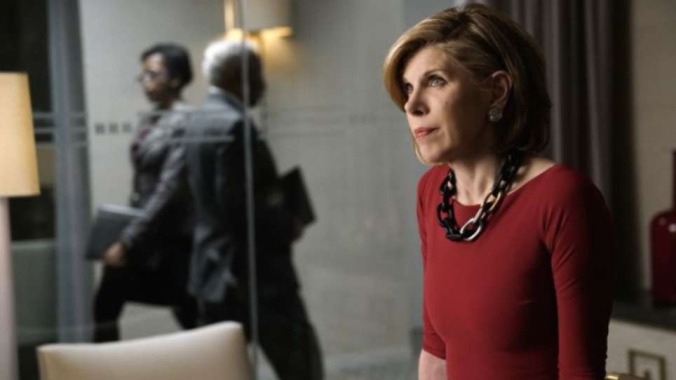
Though at times a tonal mess (especially in season three), The Good Fight continues to brim with passion, intelligence, and most importantly, humor. Legal dramas have rarely had it so good, either in their casting—Christine Baranski plays Diane Lockhart with such brio and savviness—or in their showrunners. Michelle and Robert King have made The Good Fight an exciting and necessary sequel, with as many topical storylines as narrative gambles. Here’s to another bout. []
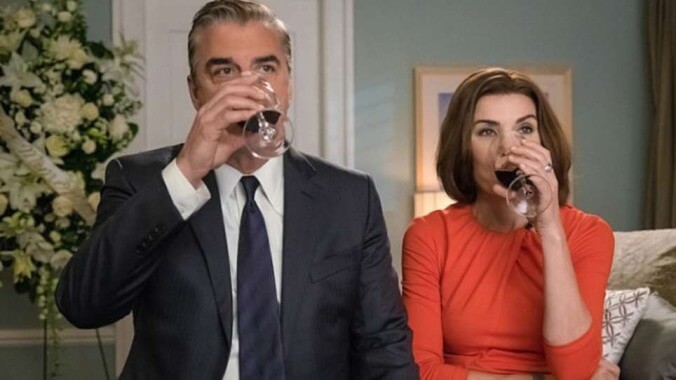
If The Good Wife instilled one truth in viewers, it’s the value of a world-class casting department. If another, it’s that the road to justice is pockmarked with the foibles, insecurities, passions, petty jealousies, and whims of those in the tollbooths. The procedural elements of Michelle and Robert King’s titan of network drama kept the engines running, but it was the struggles of the characters—funny, sexy, contradictory, and exquisitely flawed—that made the ride worthwhile. []

Hey Arnold! follows the adventures of Arnold, a supernaturally wise 9-year-old who lives with his grandparents in a sprawling urban city that resembles New York mostly, though [creator Craig] Bartlett consciously added elements from a variety of cities, such as San Francisco, Portland, and his hometown of Seattle. Arnold’s city can be threatening, but it more often acts as a playground that Arnold, his best friend Gerald, and anyone else who tags along with the two boys can roam without adult supervision. (Hey Arnold! was the first Nicktoon to have actual kids perform the voiceover work, and one of the few cartoons to do so, period.)Arnold’s fourth-grade class contains a variety of elementary-school archetypes: Eugene the Loser, Rhonda the Rich Girl, Sid the Snitch, and so on. Some of these archetypes veer toward stereotype, as with Teacher’s Pet Phoebe (who’s of Asian descent) and Village Idiot Stinky (who speaks with an exaggerated Southern drawl). But as the series progressed, all of the characters got their own episodes and nuances that took them far beyond their original two-dimensional purposes. This holds especially true for breakout character Helga G. Pataki (voiced to impish perfection by Francesca Marie Smith), who was so popular that she almost got her own spinoff series after Hey Arnold! ended. Helga, P.S. 118’s scoffing schoolyard bully, torments Arnold so she can hide her secret obsession with him. []
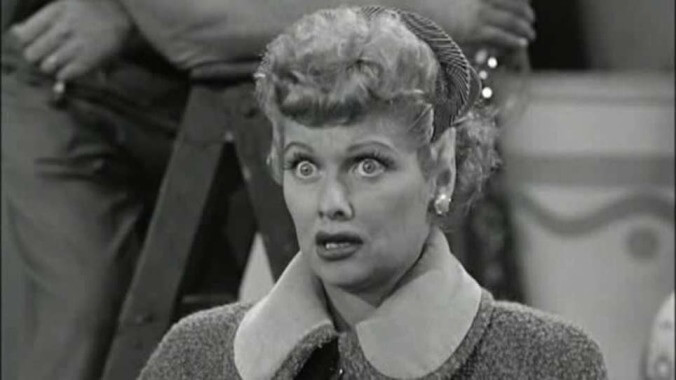
[I Love Lucy] is legitimately the most influential [series] in TV history, pioneering so many innovations and normalizing so many others that it would be easy to write an appreciation of simply, say, the show’s accidental invention of the TV rerun. (When star Lucille Ball took a maternity leave in the show’s second season, producers and network CBS slotted first-season repeats in lieu of new episodes, and those repeats proved just as popular as new episodes.)Yet, like so many foundational texts, Lucy can seem a little dusty when viewed through modern eyes, as if it had to be dug out of TV’s attic and cleared of cobwebs. You’ll often see Lucy and Ethel stuffing chocolates in their mouths or Lucy trying to do the Vitameatavegamin ad in montages of the best TV moments of all time, but how long has it been since you watched the episodes that surround them? The show’s been running non-stop in syndication for more than 50 years, but its timeslots have gotten more out of the way in the last couple of decades. It’s a curio many say they like, even if we don’t pay a lot of attention to it.This isn’t helped by the impression that the show’s attitudes are distinctly unmodern. In her day, Ball was one of the most powerful women in the country, responsible for funding many television classics through Desilu, the production company she founded with her first husband Desi Arnaz. In the show itself, however, Ball’s character, Lucy Ricardo, is a ditzy dingbat who’s terrible with money, constantly screwing up her husband’s plans, and generally running around and acting like an idiot. In some ways, this can be refreshing. The television template of the doofus husband and super-capable wife who holds the family together has been around so long that to call it cliché is an insult to clichés. In its best episodes, Lucy reminds viewers that it’s possible for women to be hilarious when playing something other than a nag or killjoy. [
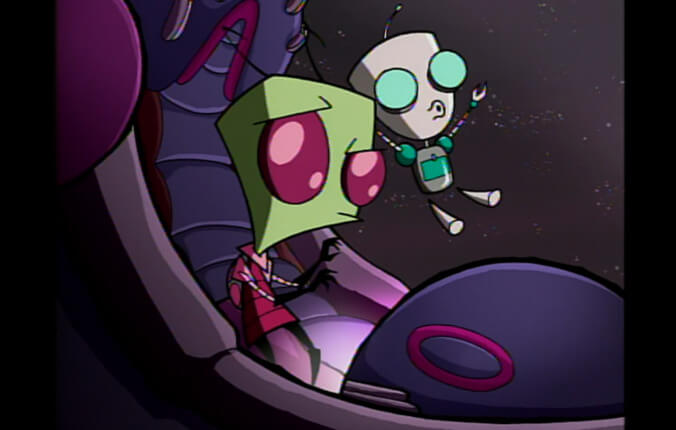
Invader Zim was destined for a cult following. From its seemingly bizarre nature to its too-early demise, the Nickelodeon cartoon brought a darker form of entertainment to the kid’s network. Aimed at early teenagers, Invader Zim followed the pint-sized title character, an extraterrestrial from the planet Irk determined to destroy Earth, for two seasons. Zim’s surrounding cast—GIR, a defective robot sometimes masquerading as a dog, and Dib, a hip and young paranormal investigator that is wise to Zim’s real identity—paired with his own ineptitude keeps him from ever succeeding. But the same cannot be said of the cartoon, which welcomed critical acclaim for straddling the line between child and adult entertainment with episodes like season one’s “,” in which a grossly obese man zips himself into a hog costume to hawk more-grimy-than-greasy pizza to children he allows to crawl all over him. The constant depiction of Earth as a complete shitcan only adds to this dingy, but delightful program. []
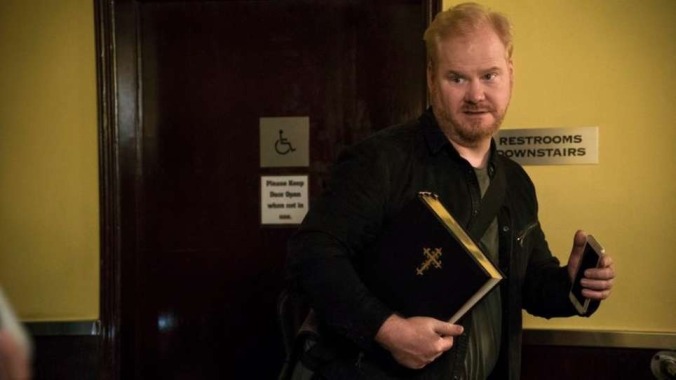
[In 2015, Jim Gaffigan] reinvented the old standby of the “dumb daddy” standup who turns his family life into a sitcom. Jim and Jeannie Gaffigan are raising five young children in a two-bedroom apartment in Manhattan, and his show offers a fictionalized version of their home that feels both inventive and true to life. As he gamely tackles subjects like childrearing, marriage, Catholicism, and food, Gaffigan is also wise enough to surround himself with an exemplary supporting cast, including Michael Ian Black and Adam Goldberg, with guest spots by friends like Chris Rock and Janeane Garofalo. Ashley Williams portrays Gaffigan’s delightful wife and Macaulay Culkin plays a barista who may or may not be Macaulay Culkin. []
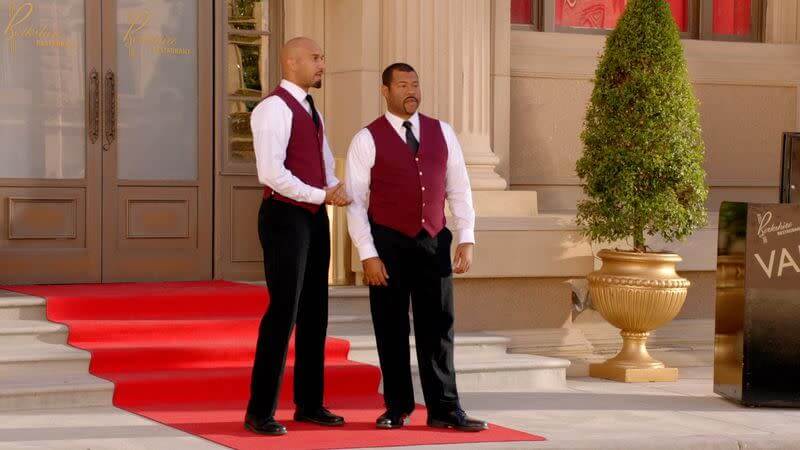
From its opening sketch exploring performative Blackness and masculinity to its devastating final sketch, a musical trip to “Negrotown,” Key & Peele uses every tool in the comedy toolbox to explore and comment on American culture. Pointed political satire, detailed character work, pop culture homage, broad physical comedy, unabashed silliness, and strange flights of comedic fancy, this series has it all. Yes, it’s ridiculously funny, with an incredible hit-to-miss ratio. Yes, it features strong performances from Keegan-Michael Key and Jordan Peele and impeccable direction from Peter Atencio, not to mention the best hair and makeup in sketch TV. What’s most impressive, though, is the versatility and depth of its writing, giving audiences some of the decade’s most indelible comedic characters. It’s most definitely our shit. []
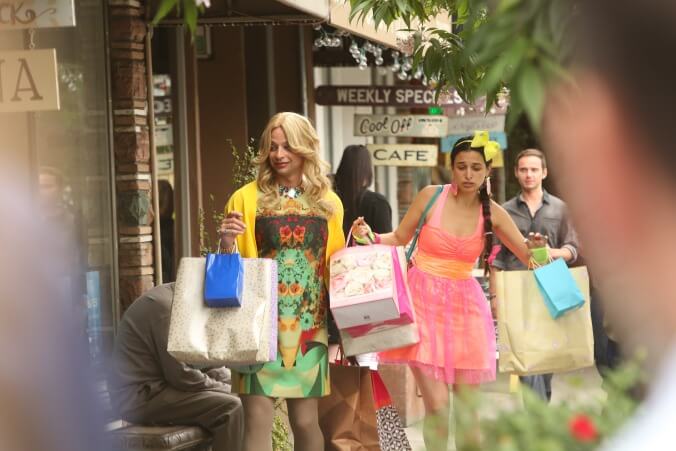
Nick Kroll clearly loves TV, and watches a lot of it, which ends up making Kroll Show both a kind-hearted tribute and a biting satire. The sketch series had a couple of nearly miraculous comedic moments in its second season: The silly one-off “Madison Chooses” spoofed Felicity with a ridiculous plot about college meal plans, while the serialized “Niece Denise” storyline followed the clueless women of PubLIZity (Kroll and Jenny Slate) through the low points of their friendship. Both Kroll and Slate—plus a gaggle of guest stars, from Zach Galifianakis to Amy Poehler and beyond—clearly have so much fun taking stabs at reality TV that it becomes almost transcendent. At its peak, Kroll Show matches the best sketch shows of all time. []
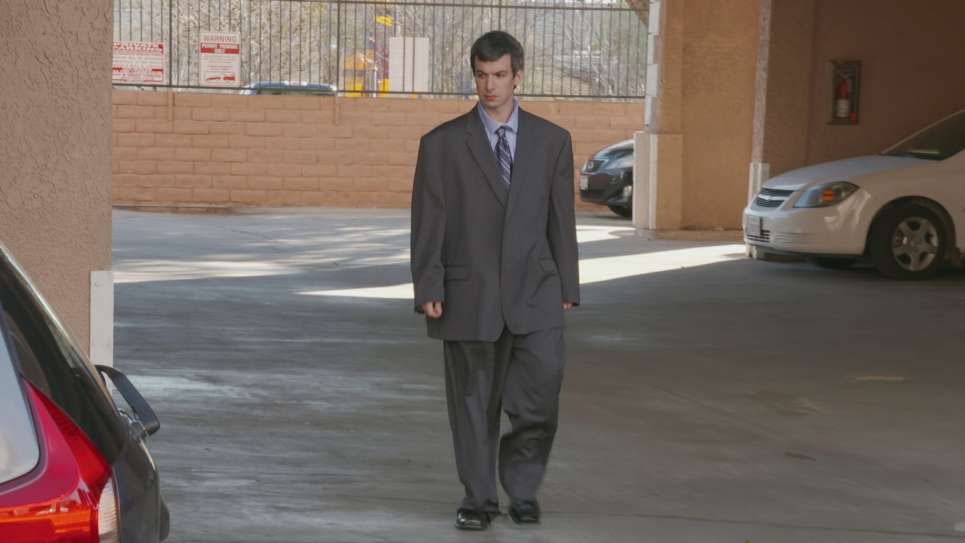
It was inevitable that someone would parody the wealth of business makeover series flooding the airwaves, but who knew that the result would be this? Across four seasons, Nathan Fielder used gags involving poo-flavored yogurt and Holocaust-denying outerwear companies to make resonant points about commercialism, virality, and the extremities of politeness. But it wasn’t the pranks themselves that made the show so much as Fielder, whose vulnerability and general air of desperation tended to either disarm his subjects or unnerve them, resulting in shocking glimpses of humanity both kind and cruel. A bow atop it all was its stunning feature-length series finale, “Finding Frances,” in which Fielder confronted the show’s blurry fourth wall during a road trip in search of a friend’s lost love. []
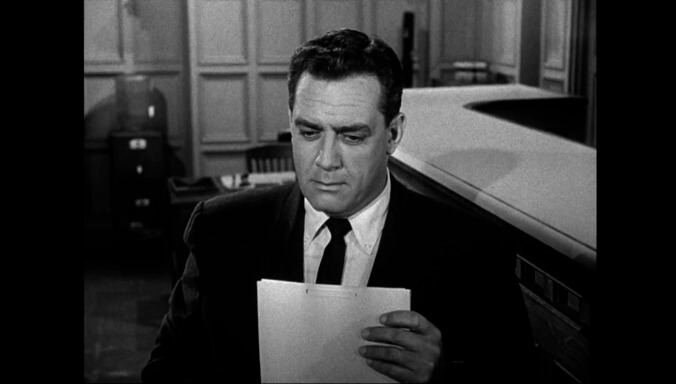
The production values on the earliest episodes—which first aired in 1957—are kind of plain, and even though the show is set in L.A., the location only plays a part inasmuch as Hollywood producers sometimes wind up as clients, and Burr sometimes eats Mexican food. But Perry Mason is still part of a long line of L.A. mystery shows that includes Columbo and [TNT’s] The Closer, about iconoclastic investigators who ignore the city’s social order, and pursue stupefying tactics that they keep to themselves. Given his general air of self-righteousness, it’s surprising how underhanded Burr can be at times, as he hides clients from the police and tampers with evidence to trap witnesses into lying. It’s also surprising that his weekly prosecutorial opponent, William Talman—the Washington Generals of TV lawyers—kept his job for the whole nine years that the show was on the air. But then, Perry Mason was never about legal realism; it was about choosing up sides. On the wrong side? As Burr’s secretary Barbara Hale puts it, “Anyone not represented by Perry Mason.” []
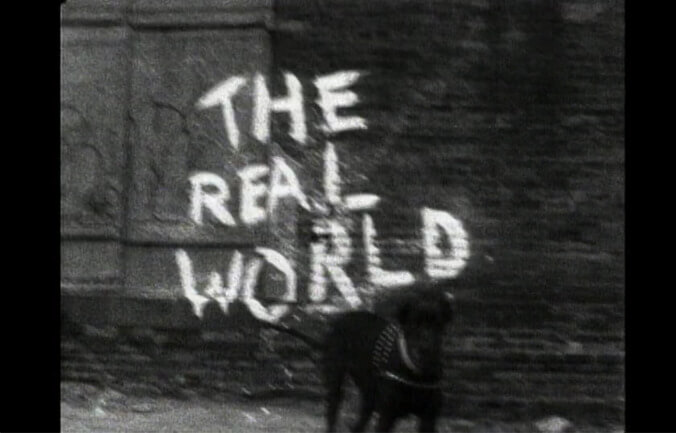
Over the course of two decades and a mind-boggling 25 seasons, [The Real World], which began as a kind of radical—albeit low-budget—programming experiment, has evolved into a faithful television standby. It’s become a show that, like Saturday Night Live or The Simpsons, seems uniquely cancellation-proof. The concept itself—stick a bunch of attractive young people in a house and let the cameras roll—now seems almost quaint in its simplicity, yet it’s precisely this timeless formula that’s allowed the show to persist for so long. []
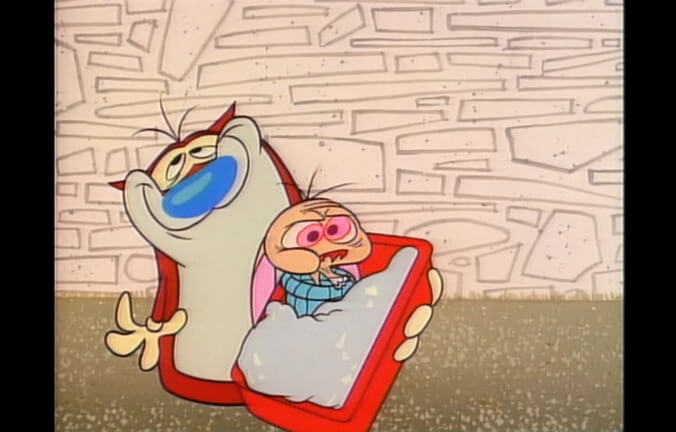
The Ren & Stimpy Show looked back to animation’s golden age not just with its wildly expressive main characters—an angry “asthma-hound” and a stupid, joyous cat—but with its ability to ride the line between children’s entertainment and something far more adult. (Kids and grown-ups can both truly love the early episodes, which can’t be said for a lot of cartoons.) Ren and Stimpy get caught by a dog catcher and learn about “the big sleep,” they go to jail, and they wrestle semi-professionally, all the while winking with the kind of jokes that drove the Nickelodeon higher-ups crazy. Eventually creator John Kricfalusi left the show, and it was defanged. (He later launched a strictly adult version of the show, which was just sort of gross.) But those first two seasons are basically unimpeachable; they stand tall with the best cartoons of all time. []

When crime rears its ugly head in Reno, Nevada, the men and women of the Reno Sheriff’s Department are… not exactly on the case, but certainly somewhere near it, probably working through their own petty disputes in the squad car. Created by The State alumni Ben Garrant, Thomas Lennon, and Kerri Kenney, Reno 911! parodied the run-and-gun look of Cops, in a improv-driven format fit for a rogues’ gallery that eventually included Paul Rudd, Keegan-Michael Key, Patton Oswalt, Nick Kroll, and many more.
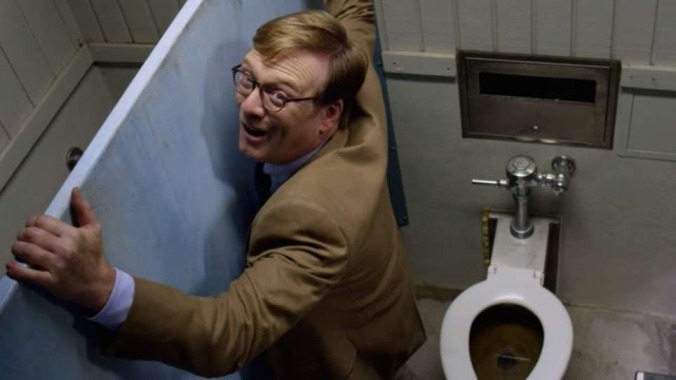
If Review were only a cautionary tale about the whims of viral stardom, it would remain an impressive testament to the destructive power of fleeting fame. Co-creators Charlie Siskel, Jeffrey Blitz (director of all 22 episodes), and Andy Daly (irreplaceable as professional life critic Forrest MacNeil), make it more, much more. An adaption of Australian series Review With Myles Barlow, Forrest’s show-within-a-show asks “Life: It’s literally all we have. But is it any good?” Not in Forrest’s hands. Daly will make you believe in a man who can make eating an ice cream cone a potentially life-ruining errand, as Review leaps gleefully, sickeningly, across the chasm from comedy to tragedy, scene to scene, second to second. []
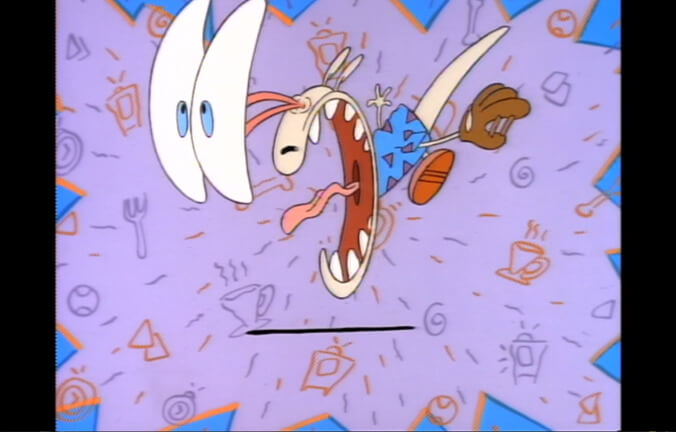
Though no less inventive or creator-driven than the three series that came before it—The Ren & Stimpy Show, Doug, and Rugrats—Rocko’s Modern Life shared with Ren & Stimpy an affinity for the animated old guard. Rocko’s Modern Life creator Joe Murray assembled his show from storyboards, rather than scripts, much like the artists who churned out cartoons from Warners’ famed Termite Terrace complex. The world around Murray’s protagonist—a happy-go-lucky wallaby transplanted to the fictional American city of O-Town from his native Australia—is vibrant and wavy, like the environments of an old Fleischer brothers comedy short.The show also subscribed to the Warner Bros. notion—seen in “Rabbit Transit” as well as any number of starring vehicles for Daffy Duck—that the good guy wasn’t always the winner. The show’s title was meant as a joke: Rocko enjoyed the convenience of life at the end of the 20th century, but that convenience came at a price, typically Rocko’s comfort or dignity. Yet this didn’t bother the kid who’d been so perturbed by “Rabbit Transit,” likely because of the way Rocko always bounced back. In early installments like “A Sucker For The Suck-O-Matic,” the character is duped again and again, as quick cure-alls and home-shopping deals backfire with hysterical results. But these are just the adjustments he has to make to live the modern life; the conclusion of “A Sucker For The Suck-O-Matic” even finds him content to live in the bowels of a massive, ravenous appliance. []
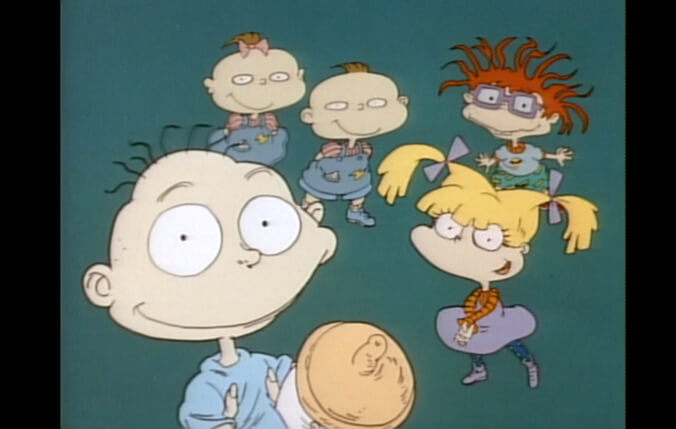
Nearly everything that would make Rugrats a major success and a pop-culture phenomenon is present in the original pilot presented to Nickelodeon by Klasky-Csupo productions. It was produced after the animation studio’s heads, Arlene Klasky and Gábor Csupó, heard Nickelodeon was looking for its own original animated series. Co-creator Paul Germain created the characters, while Klasky and Csupó handled the animation end, and the six-and-a-half minute pilot introduces the world of the characters fairly intact. Not every character is here—the villainous Angelica, perhaps the series’ most famous character, doesn’t appear at all—but the show’s sensibility and toddler-like point of view are present immediately, as hero Tommy Pickles attempts to figure out what the strange white object he’s spied in the bathroom is. Even the Mark Mothersbaugh-composed theme song is present. []
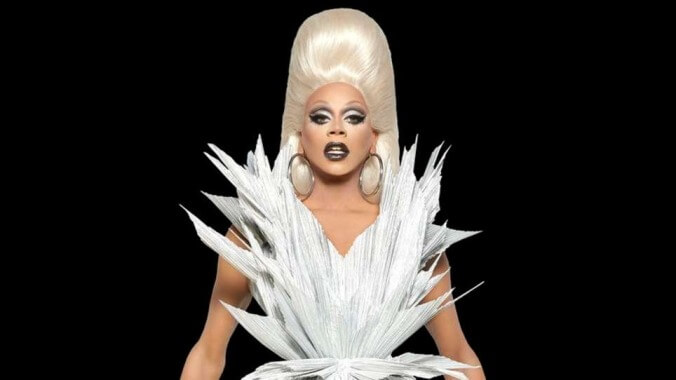
RuPaul’s Drag Race, once a shoestring production on Logo, sashayed into the zeitgeist over the decade, its glammed-up alums having gone on to star in Oscar-winning films, release hit albums, and get mistaken for Taylor Swift by John Travolta. Its competitive spirit might feel familiar, but Drag Race offers so much more: couture, empathy, shade, and challenges wholly unique to the culture of its contestants. Lip-syncing has never looked so impressive. []

They aren’t clouds. Strange symbols dot the backgrounds of Bikini Bottom, home to SpongeBob SquarePants, Squidward Tentacles, Patrick Star, Eugene Krabs, and Sandy Cheeks—but they aren’t clouds. You could call them “sky flowers,” but that doesn’t really make sense either—after all, the faded blue behind each squiggle is water, not sky, and the squiggles themselves don’t represent solid objects in any tangible, meaningful way. But they look right. The reds and greens and yellows add life and color in a way that a flat blue might not. Those odd shapes, suspended motionless with no clear reason or value, establish a tone.There are a lot of things that don’t make sense on SpongeBob SquarePants. But there’s a clear and coherent vision that runs through the entire show, from the design of SpongeBob’s kitchen-sponge body down to the squeaky-balloon sound of his footsteps. It’s a perspective, and a warm, specific, crazy little world. Of course it has sky flowers in it. What else would be up there? []
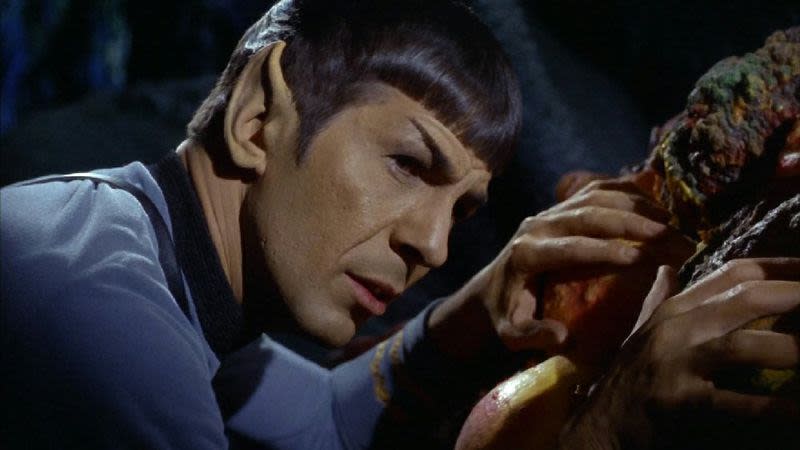
Creator Gene Roddenberry’s “Wagon Train to the stars” is one of the finest examples of pulp storytelling—emotion first, logic eventually—ever brought to the small screen. From 1966 to 1969, Captain James T. Kirk (), first officer Spock (), chief medical officer Leonard “Bones” McCoy (DeForest Kelley), and the rest of the crew of the Starship Enterprise traveled the galaxy, “to seek out new life and new civilizations, to boldly go where no man has gone before.” They struggled against aliens of unimaginable power, stumbled over worlds whose civilizations mirrored Earth’s own troubled past, and, yes, romanced their fair share of space babes. Over the course of three seasons and 79 episodes, Star Trek ranged from suspense to comedy to tragedy, and in the end, the good guys always won, even if victory cost them a little more than they were willing to spend. []

Deep Space Nine is the only Trek series it’s possible to recommend in its entirety without any caveats. The show premiered with remarkable confidence in 1993 and only improved with age. While the previous series followed spaceships exploring the galaxy (and seldom staying to clean up the messes they make), DS9 takes place on a space station at the edges of Federation territory. If TOS was “Wagon Train to the stars,” then DS9 was “Gunsmoke in space,” a show set on the fringes of civilization centered on officers who must occasionally bend the rules to get things done. In the excellent premiere, “Emissary,” a wormhole opens a passage to the unexplored Gamma Quadrant and turns DS9 into a crucial trading post. Built up during the first five seasons, a massive war officially kicks off in the season five finale, “Call To Arms,” leading to heavy serialization across the show’s final two seasons. []

Thanks to Star Trek’s growing popularity, Gene Roddenberry and Paramount Pictures made the unprecedented decision to reboot the series as a brand new TV show. Star Trek: The Next Generation (also known as TNG or The Next Gen) debuted in 1987 and marked the beginning of almost two decades of Trek on TV. Set in the 24th century, 100 years after the original, the show followed a brand new crew aboard the Enterprise. Where TOS focused on space adventures, TNG emphasized negotiations, diplomacy, and headier storytelling. To alleviate the redshirt jokes, commanders on this Enterprise now wore red while security and engineering wore gold (doctors stayed in blue). Replacing the macho Captain Kirk was the more thoughtful, philosophical Captain Jean-Luc Picard (Patrick Stewart). Stewart quickly became TNG’s secret weapon and his Shakespearean gravitas single-handedly elevated the quality of episodes like “” and “.” The often-austere Picard kept his crew at an emotional distance, yet his love of history and literature and his occasionally cheeky sense of humor gave the character a softness. []
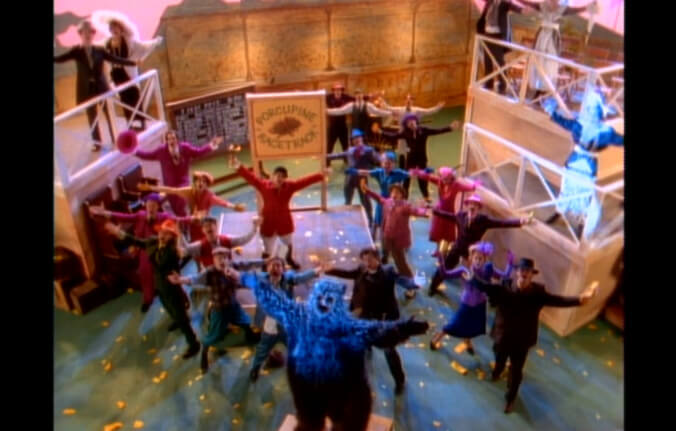
If you don’t know The State, you probably know its members. Joe Lo Truglio fights crime on , and Michael Ian Black and Kerri Kenney-Silver are playing a married couple in the upcoming sitcom Us & Them. Thomas Lennon and Robert Ben Garant are writing another . Ken Marino stars in , which is sometimes written by Michael Showalter, is sometimes directed by Michael Patrick Jann, and always executive produced by David Wain. Kevin Allison and Todd Holoubek don’t do much on film anymore (the former hosts the popular story-sharing podcast RISK!), but they joined the rest of the troupe in and . And for a year and a half in the mid-1990s, the 11 members of The State wrote, performed, and often directed the best sketch comedy on the air.It was a golden age for sketch on TV. As NBC’s Saturday Night Live embalmed itself into an institution and the rest of The Big Three wanted a piece of the action. CBS imported The Kids In The Hall from CBC, and ABC imported from SNL. But the real challengers were on the newer networks. All decade long, upstart Fox tried to cultivate its own sketch superpower in the irreverent vein of its sitcoms, and Married…With Children. First came the Wayans’ spiky In Living Color, then the snazzier Ben Stiller Show. Finally, the network figured out what longevity requires with its diet SNL, MADtv. HBO also had Kids In The Hall, but Mr. Show With Bob And David was its homegrown dissident, a more abstract sketch show for the channel that purports to be “Not TV.” And from the end of 1993 to the summer of 1995, nestled between Ben Stiller and Dana Carvey, MTV broadcast The State. []
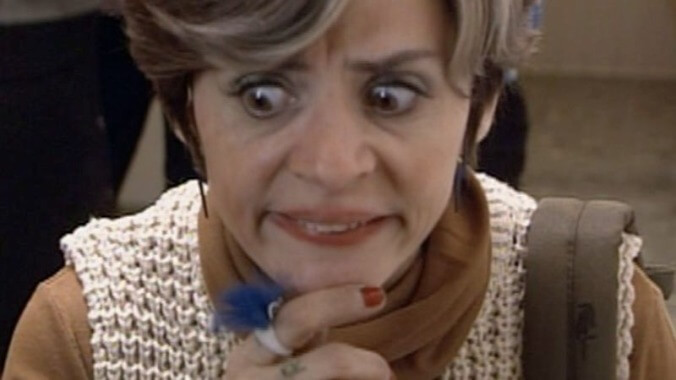
Strangers With Candy debuted on Comedy Central in April 1999—a cataclysmic moment in the history of American adolescence. Less than two weeks after the première of the show, which garnered reviews that ranged from glowing (Rolling Stone called it “gleefully absurdist”) to curtly dismissive (“leaden satire,” according to Time), two troubled teenagers in Colorado opened fire on their classmates at Columbine High School. It’s tempting to read some meaning into the timing: However daft it is, Strangers With Candy is at its core a show about the cruelties of high school, and its heroine, a 46-year-old freshman named Jerri Blank, is living proof of the protracted trauma of adolescence. []
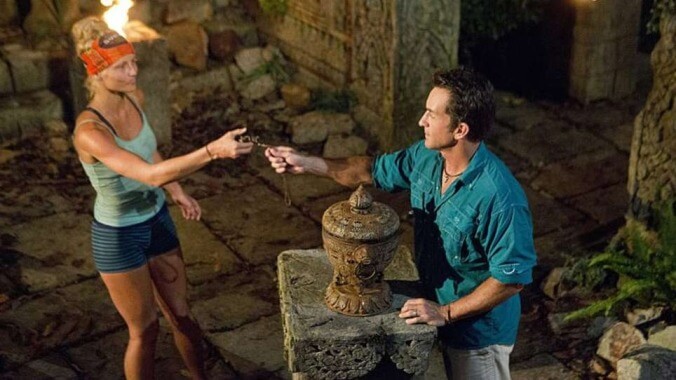
From our list of :When the American version of Survivor debuted on CBS in the summer of 2000, it seemed more likely to be a catastrophe than a phenomenon. What possible long-term entertainment value could there be in watching a bunch of wannabe TV stars slowly starve to death on a remote beach? But from the moment the shamelessly devious Richard Hatch strolled naked across the sand (or more significantly, the moment he introduced the concept of the voting “alliance”), it was clear that with the right cast of characters and the right set of challenges, Survivor could be addictive—almost like a soap opera crossed with a game show crossed with a psychological experiment.
Centered around the employees of the Sunshine Cab Company—who viewed driving a cab as a placeholder for a better life that never quite materialized—Taxi is one of the greats of the sitcom form. It has one of the most talented casts ever assembled—including Judd Hirsch, Danny DeVito, Marilu Henner, Andy Kaufman, Christopher Lloyd, and Carol Kane—and the old-school multi-cam vibe of a story that’d be right at home on the theatrical stage. []
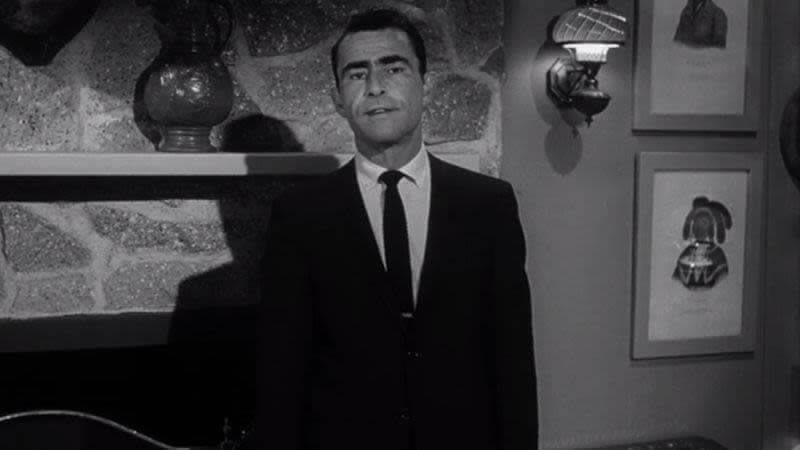
To this day, The Twilight Zone is one of the greatest—most beautiful, intelligent, horrifying—television dramas ever. The stories range from an Old West saloon to a UFO in the future to a Nazi sub to a then-contemporary suburb to a Salvation Army bin—all of them deeply haunted. There’s a sense of national exorcism in Serling’s merciless hammering. But it isn’t just narrative twists and thematic power. A number of uncanny luminaries passed through, like writers Richard Matheson and Ray Bradbury, directors Ida Lupino and Jacques Tourneur, and actors Agnes Moorehead and Burgess Meredith, making the series as much a feat of performance and mood as anything else. Most of all, it’s a time capsule—a freakily subjective one, but one of the greatest American works of its era nonetheless. []

Hill Street Blues writer Mark Frost and auteur came together to create this weird mystery show, but there’s so much more to Twin Peaks than weirdness and mystery. It’s a small-town drama, a soap opera parody, and above all, a nightmare. As Kyle MacLachlan’s Special Agent Dale Cooper explores the town, common threads emerge about domineering men and brutalized women. Like its heir, , Twin Peaks sees patriarchy itself as a horror. With Lynch setting the stage in the pilot, the series is full of unsettling details like off-kilter performances and the screech of buzz saws, the look so terrifyingly stylized that even a meta moment becomes laced with danger. Come for the mystery, stay for the parody, and keep the lights on for the horror. []
GET A.V.CLUB RIGHT IN YOUR INBOX
Pop culture obsessives writing for the pop culture obsessed.